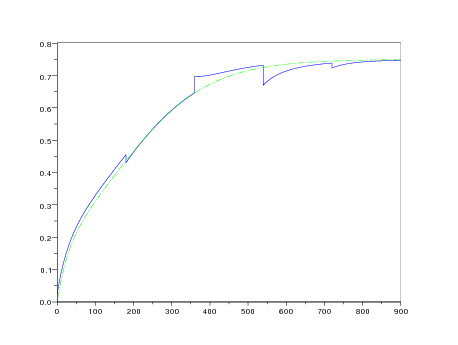Section: New Results
Bilharzia
Schistosomiasis or bilharzia is a water-borne parasitic disease that affects 200 million people and poses a treat to 600 million in more than 76 countries [39] . It is caused by blood-dwelling fluke worms of the genus Schistosoma. The transmission cycle requires contamination of surface water by excreta, specific freshwater snails as intermediate hosts, and human water contact [21] . Schistosome are transmitted via contact with contaminated water containing cercaria the infective stage of the parasite [39] , [32] .
In connection with EPLS, a research NGO based in Saint-Louis (Senegal), and Pasteur Institute of Lille, we investigate a spatially deterministic metapopulation model in which infectious agents persist within a network of connected environments. This model accounts for human population age and behavior structure. We completely analyses the asymptotic behavior of this model. We give a formula for computing the basic reproduction ratio . If we prove that the disease free equilibrium is globally asymptotically stable. If , with an hypothesis on connectedness, we prove that there exists a unique positive endemic equilibrium, which is globally asymptotically stable.
The validation of this model, using data of EPLS, is under investigation and is the subject of a Phd thesis. The defense will occur at the beginning of 2013. We explore the identification of key parameters using different kind of observers.




